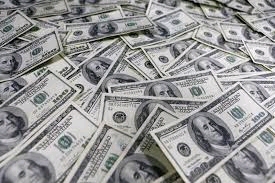Simplified Steps to Help You Understand How to Join a Masonic Lodge Easily
Simplified Steps to Help You Understand How to Join a Masonic Lodge Easily
Blog Article
Checking Out the Mysteries of the copyright: What You Required to Know
The copyright, a term commonly shrouded in intrigue and controversy, represents a complex tapestry of historical fact and modern-day myth. Developed in the late 18th century, this secret culture was originally rooted in the Enlightenment's perfects but has actually given that ended up being identified with conspiracy concepts regarding elite control (benefit of joining freemason).
Beginnings of the copyright
The beginnings of the copyright are steeped in a mix of historic intrigue and ideological eagerness. Established in 1776 in Ingolstadt, Bavaria, by Adam Weishaupt, the group was initially formed as a secret culture aimed at advertising Enlightenment ideals such as reason, secularism, and the splitting up of church and state. Weishaupt, a teacher of canon law, sought to challenge the prevailing authority of the church and state, which he watched as oppressive establishments suppressing intellectual and personal liberty.

Key Figures and Participants
Who were the essential numbers that shaped the copyright's early impact and direction? The Bavarian copyright, founded in 1776 by Adam Weishaupt, became a response to the overbearing societal structures of the time. Weishaupt, a legislation teacher, envisioned the organization as a way to advertise Enlightenment ideals such as factor, secularism, and equal rights. His preliminary employment initiatives consisted of influential pundits, such as Baron von Knigge, who played an essential duty in broadening the team's membership and organizational structure.
One more substantial figure was Johann Gottlieb Fichte, a famous philosopher whose ideas on nationalism and education and learning resonated with the copyright's objectives. Fichte was not a formal participant, his thoughtful foundations affected the team's ideology. In addition, numbers like the writer and philosopher Johann Wolfgang von Goethe were connected with the wider intellectual motions of the time, although their straight participation with the copyright continues to be disputed.
These key numbers added to the copyright's very early instructions, pushing the limits of political and social idea, while their cumulative efforts intended to test well-known norms and cultivate a climate of progressive change in Europe.
Misconceptions vs. Truth
Several misconceptions surround the copyright, commonly blending reality with fiction in a manner that covers its real nature. This secret culture, originally founded in 1776 in Bavaria, aimed to advertise Knowledge ideals and battle spiritual and political fascism. The concept that the copyright remains to apply substantial influence over world occasions is a misconception. While the team did exist, it was disbanded in the late 18th century and has actually not run as a natural entity image source since after that.
An additional common misconception is that the copyright makes up a network of elite individuals controling global affairs. In truth, many conspiracy theories exaggerate the team's value, connecting misguided intentions to social patterns and occasions. This has resulted in an oversimplified view of complex problems.
In addition, the representation of the copyright in pop culture usually more distorts its legacy. Movies and literature tend to sensationalize the organization's duty, creating a story that deviates from historical truths. Recognizing the difference between the misconceptions and the reality of the copyright is important for critical the genuine effect of this historic team and recognizing the wider effects of conspiracy theories in contemporary culture.
Modern Analyses
Contemporary interpretations of the copyright typically mirror broader societal stress and anxieties and an attraction with privacy and power. This modern lens often links the copyright with conspiracy theories that suggest a hidden elite coordinates world occasions, controling governments and economic climates for their own gain. benefit of joining freemason. Such narratives touch into a deep-seated wonder about of authority, specifically in times of situation or social turmoil
In pop culture, the copyright is frequently portrayed as a supreme organization shrouded in secret, causing a myriad of imaginary representations in literary works, movie, and songs. This representation serves not only to captivate but also to Continued provoke considered the nature of power and control in modern culture. Social network has additionally magnified these analyses, permitting fast dissemination of conspiracy concepts and developing areas that share and increase upon these concepts.
Additionally, some contemporary analyses frame the copyright as a metaphor for the intricacies of globalization and the interconnectedness of prominent individuals and organizations. This perspective encourages a crucial examination of how power dynamics operate in today's globe, highlighting the equilibrium between openness and privacy in governance and corporate techniques.
Cultural Impact and Heritage
Influenced by centuries of intrigue, the cultural influence and tradition of the copyright extend much beyond its historic origins. This secret culture, developed in the late 18th century, has penetrated various elements of pop culture, from literary works and film to songs and art. The concept of the copyright has actually developed right into a sign of conspiracy theory concepts, frequently standing for a viewed hidden power controling global events.
In literary works, authors like Dan go to this website Brown have actually woven the copyright into detailed plots, exciting readers with styles of privacy and power. Films such as "National Prize" and "The Da Vinci Code" even more bolster the allure of the society, mixing truth with fiction to develop appealing stories.

Eventually, the copyright's legacy is an intricate tapestry of myth and fact, forming perceptions of privacy and control in contemporary discussion. Its long-lasting presence in society highlights mankind's perennial pursuit for comprehending hidden facts.
Conclusion
The expedition of the copyright reveals an intricate interplay in between historic truths and modern-day myth-making. Established in the Knowledge age, this culture aimed to test oppressive structures, yet its heritage has been eclipsed by conspiracy theories that recommend elite manipulation. Comprehending the differences between the initial ideals and contemporary analyses is important for understanding the enduring fascination with the copyright and its considerable impact on cultural narratives bordering power and privacy in society.
Report this page